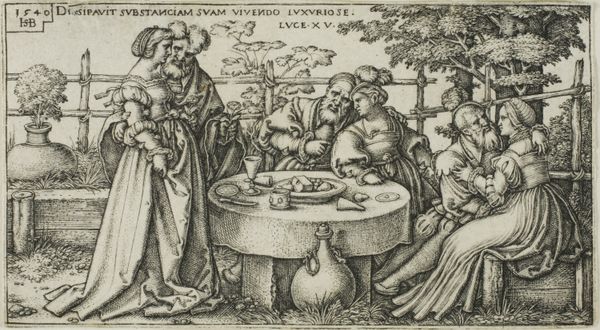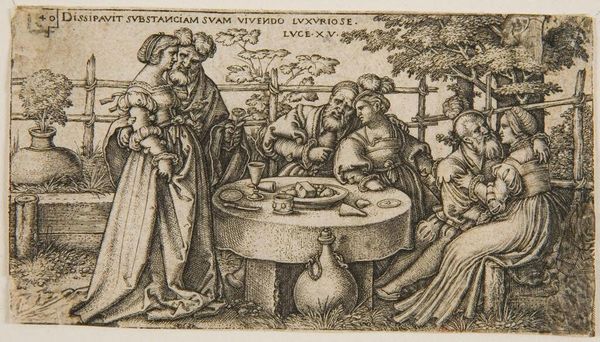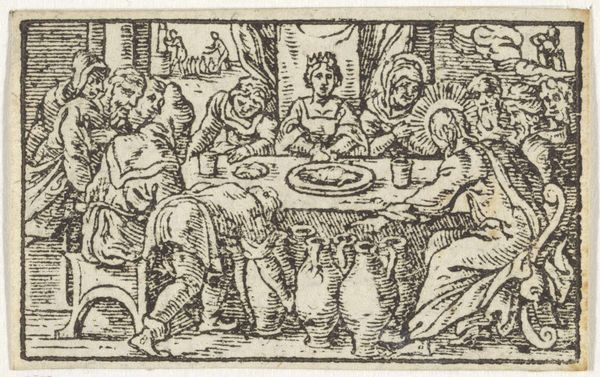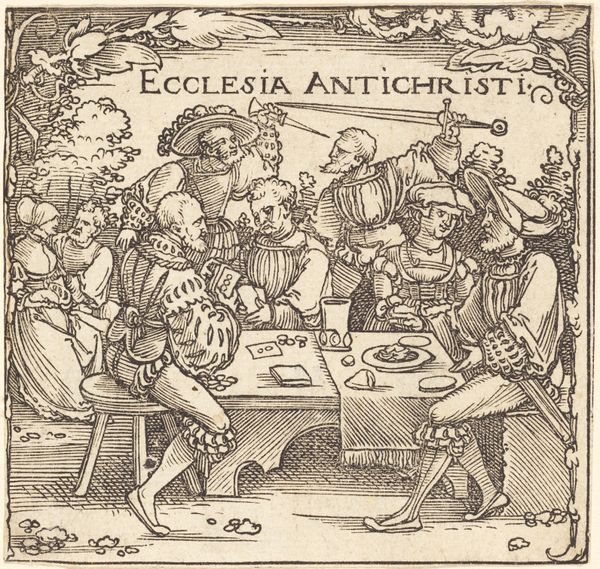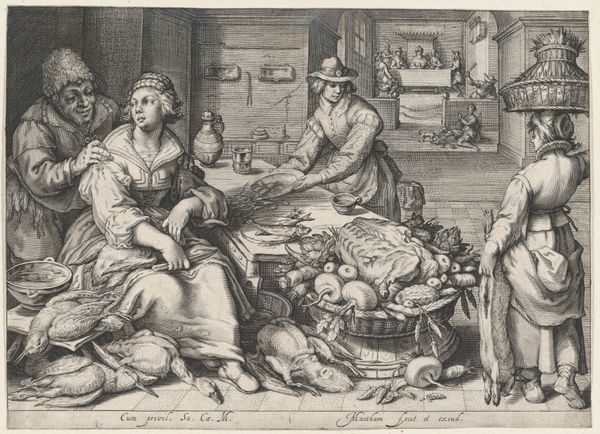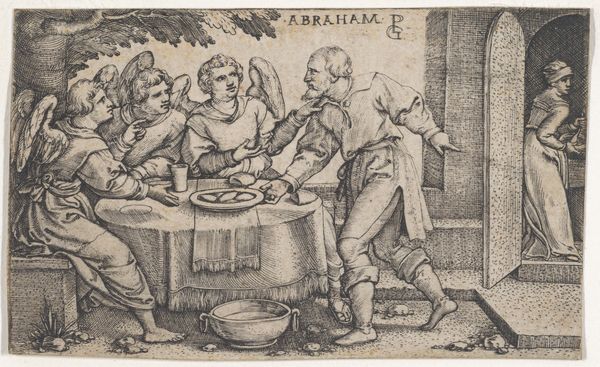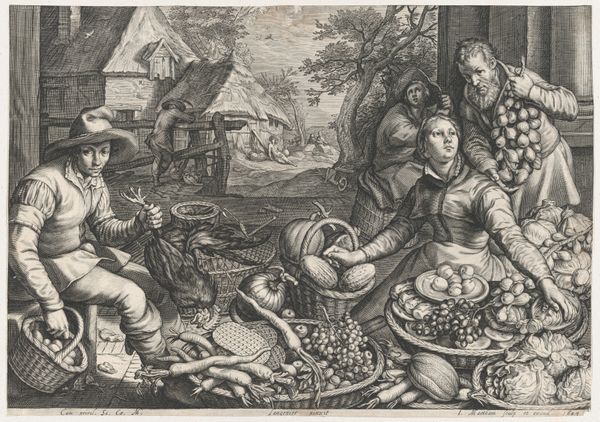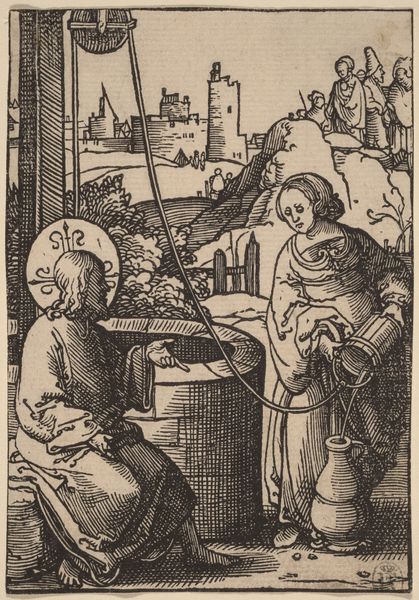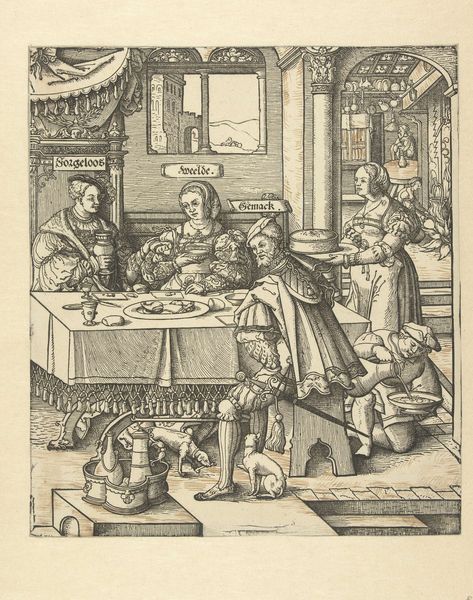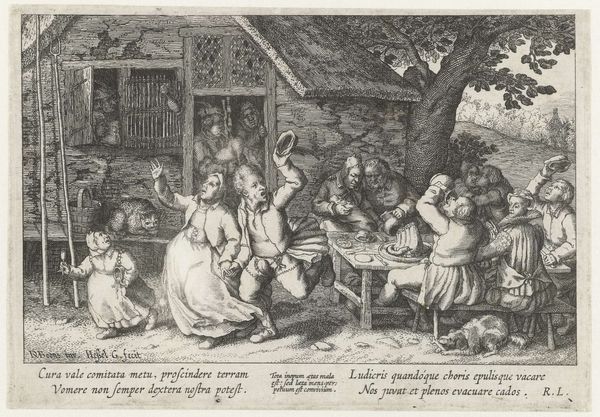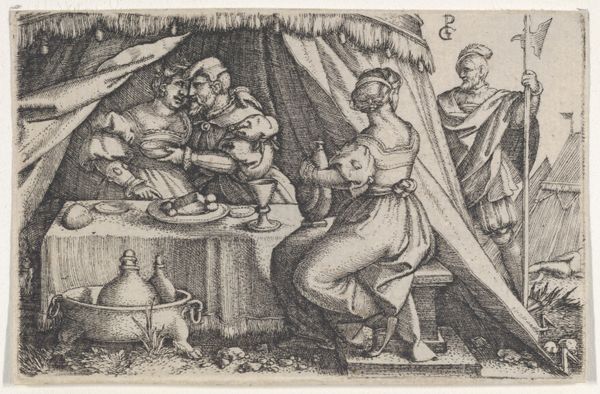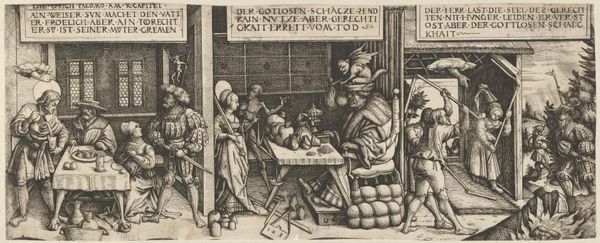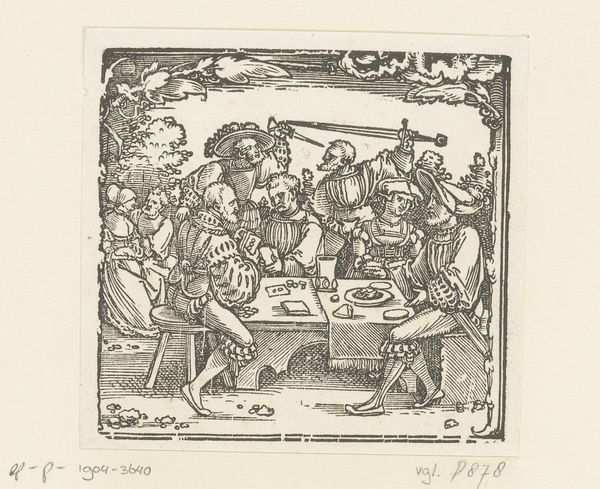
print, engraving
#
narrative-art
#
pen drawing
# print
#
figuration
#
genre-painting
#
northern-renaissance
#
engraving
Dimensions: 2 × 3 3/4 in. (5.08 × 9.53 cm) (sheet)
Copyright: Public Domain
Sebald Beham’s “Prodigal Son Wasting His Fortune” was made around 1540 using the technique of engraving. This involves carving an image into a metal plate, inking it, and then pressing paper onto the plate to transfer the image. The material qualities of the metal and paper dictate the final aesthetic, with fine lines and subtle tonal variations creating a detailed scene. The process of engraving demanded immense skill and precision, reflecting a well-established tradition of craftsmanship. The density of the lines speaks to the amount of labor involved. In this image, we see the biblical story of a son squandering his inheritance on lavish entertainment. Beham was working in a time of great economic change, and prints like these offered moralizing lessons about wealth and consumption. They also helped to democratize art. Considering the material and social context of this print allows us to appreciate the rich layers of meaning embedded within it, and to see how Beham’s craft intersected with the economic realities of his time.
Comments
No comments
Be the first to comment and join the conversation on the ultimate creative platform.
